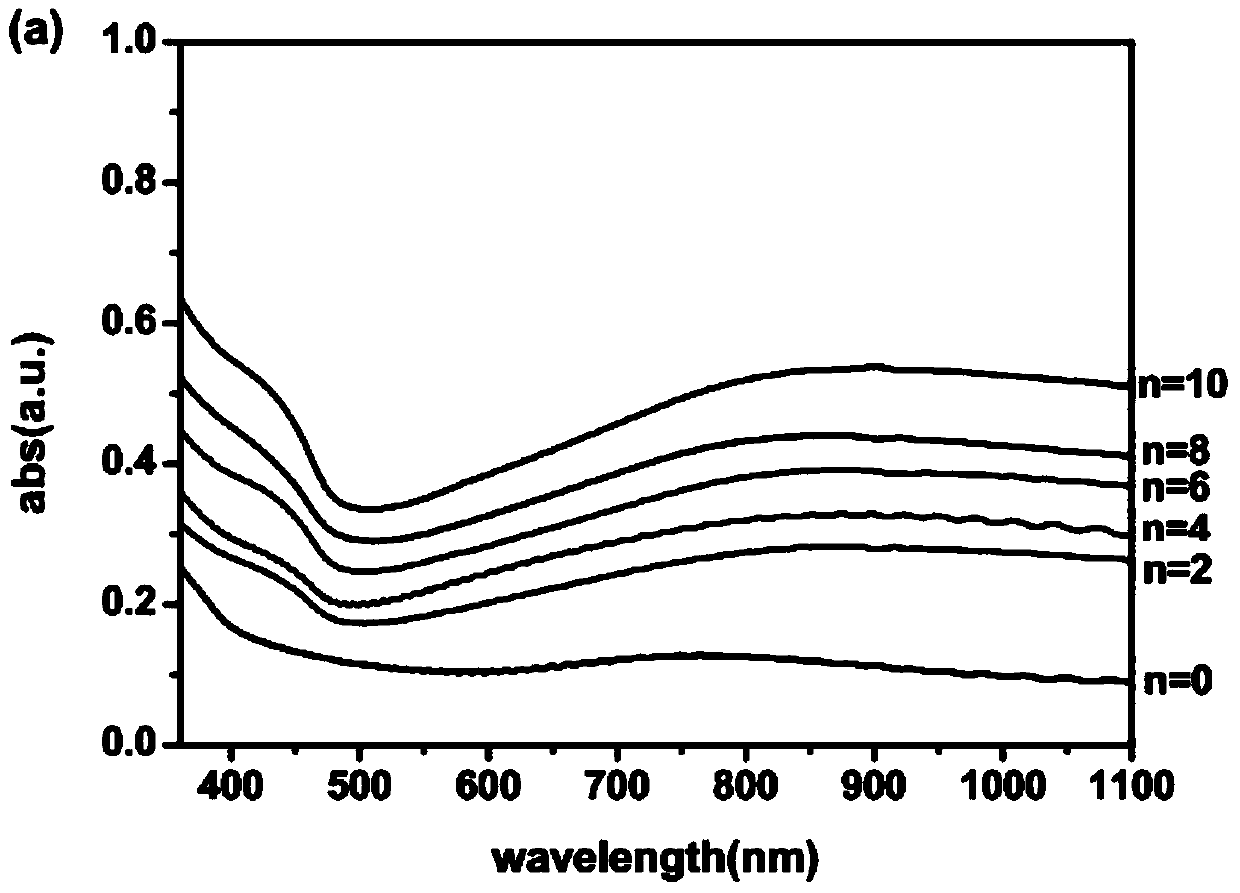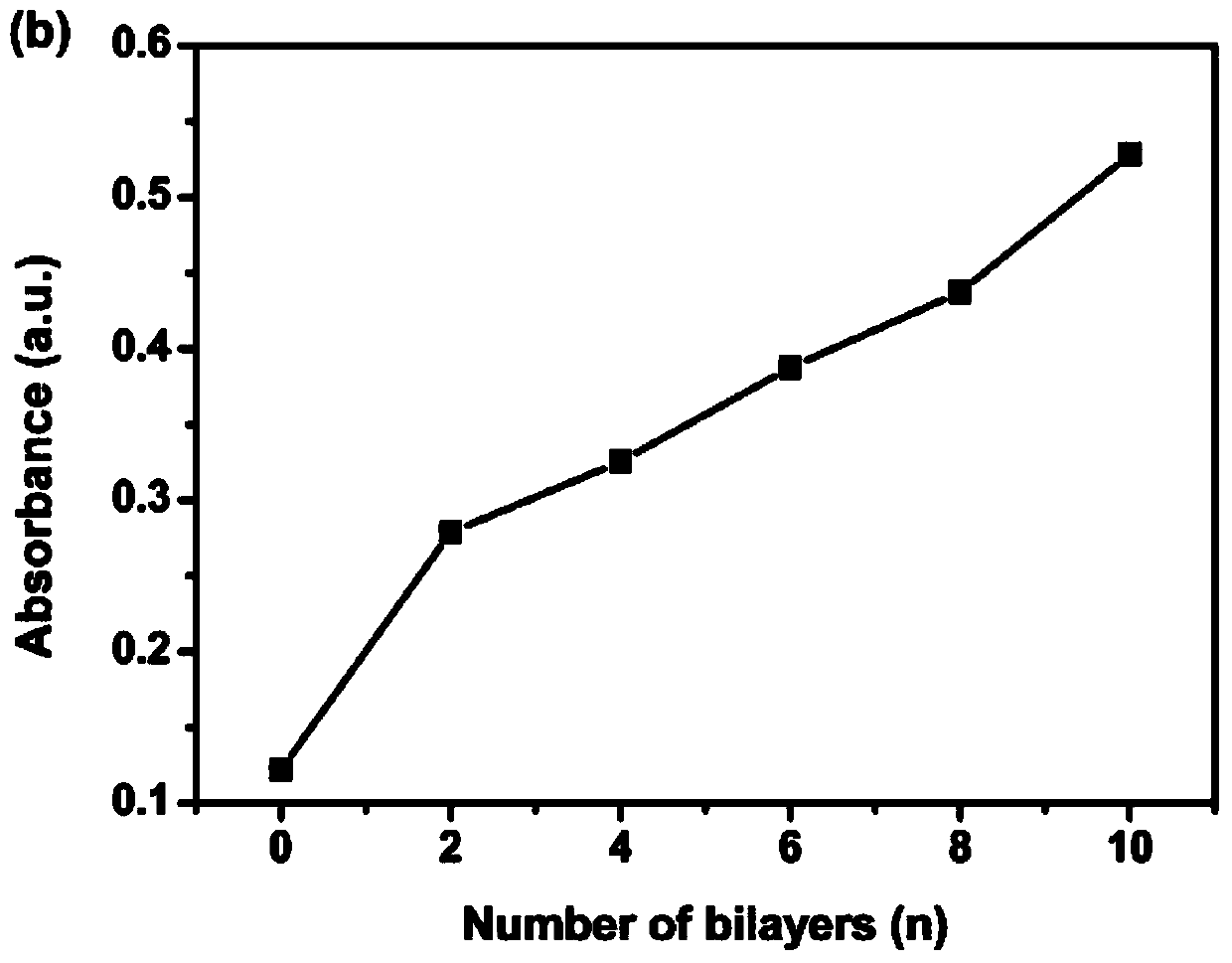Method for manufacturing cellulose nanofiber electrochromism supercapacitor
A supercapacitor and nanofiber technology, applied in the manufacture of hybrid/electric double layer capacitors, etc., can solve the problems of high thermal expansion coefficient, low processing temperature, difficult biodegradation and recycling, and achieve good uniformity, good flexibility and Improved transparency and cycle stability
- Summary
- Abstract
- Description
- Claims
- Application Information
AI Technical Summary
Problems solved by technology
Method used
Image
Examples
Embodiment 1
[0027] 1. Carry out TEMPO catalytic oxidation of bamboo pulp fibers to prepare oxidized cellulose, then process the oxidized cellulose with an ultrasonic cell pulverizer, and centrifuge the mixture to obtain the supernatant to obtain a CNFs dispersion;
[0028] 2. Pour the CNFs dispersion obtained in step 1 into a special plastic evaporating dish, and let it stand for several days to obtain a CNFs base film with a thickness of 0.2mm;
[0029] 3. Immerse the CNFs base film obtained in step 2 into CuCl with a temperature of 30°C and a concentration of 1 mg / mL (pH value 4.66). 2 After being in the solution for 1 min, it was taken out, rinsed with deionized water and dried in the air to obtain CNFs / Cu 2+ membrane;
[0030] 4. Adjust the pH value of the GO dispersion liquid with a concentration of 8.7 mg / mL (that is, 8.7 mg of GO dispersed in each mL of water) to the same value as the above CuCl 2 The pH value of the solution is the same, i.e. 4.66, and then the CNFs / Cu obtained ...
Embodiment 2
[0040] 1. Carry out TEMPO catalytic oxidation of wood pulp fibers to prepare oxidized cellulose, then process the oxidized cellulose with an ultrasonic cell pulverizer, and centrifuge the mixture to obtain the supernatant to obtain a CNFs dispersion;
[0041] 2. Pour the CNFs dispersion obtained in step 1 into a special plastic evaporating dish, and let it stand for several days to obtain a CNFs base film with a thickness of 0.15mm;
[0042] 3. Immerse the CNFs base film obtained in step 2 into CuCl with a temperature of 60°C and a concentration of 25 mg / mL (pH value 2.39) 2 After being in the solution for 1 min, it was taken out, rinsed with deionized water and dried in the air to obtain CNFs / Cu 2+ membrane;
[0043] 4. Adjust the pH value of the GO dispersion with a concentration of 1 mg / mL to the same value as the above CuCl 2 The pH value of the solution is the same, i.e. 2.93, and then the CNFs / Cu obtained in step 3 2+ The film was immersed in GO dispersion at 60 °C fo...
Embodiment 3
[0053] 1. Prepare oxidized cellulose by TEMPO catalytic oxidation of straw pulp fiber, then process the oxidized cellulose with an ultrasonic cell pulverizer, and centrifuge the mixture to obtain the supernatant to obtain a CNFs dispersion;
[0054] 2. Pour the CNFs dispersion obtained in step 1 into a special plastic evaporating dish, and let it stand for several days to obtain a CNFs base film with a thickness of 0.25mm;
[0055] 3. Immerse the CNFs base film obtained in step 2 into CuCl with a temperature of 90°C and a concentration of 75 mg / mL (pH value 1.56). 2 After being in the solution for 1 min, it was taken out, rinsed with deionized water and dried in the air to obtain CNFs / Cu 2+ membrane;
[0056] 4. Adjust the pH value of the GO dispersion with a concentration of 10 mg / mL to the same value as the above CuCl 2 The pH value of the solution is the same, i.e. 1.56, and then the CNFs / Cu obtained in step 3 2+The film was immersed in GO dispersion at 90 °C for 1 min, ...
PUM
| Property | Measurement | Unit |
|---|---|---|
| Concentration | aaaaa | aaaaa |
| Thickness | aaaaa | aaaaa |
| Thickness | aaaaa | aaaaa |
Abstract
Description
Claims
Application Information
 Login to View More
Login to View More - R&D
- Intellectual Property
- Life Sciences
- Materials
- Tech Scout
- Unparalleled Data Quality
- Higher Quality Content
- 60% Fewer Hallucinations
Browse by: Latest US Patents, China's latest patents, Technical Efficacy Thesaurus, Application Domain, Technology Topic, Popular Technical Reports.
© 2025 PatSnap. All rights reserved.Legal|Privacy policy|Modern Slavery Act Transparency Statement|Sitemap|About US| Contact US: help@patsnap.com



